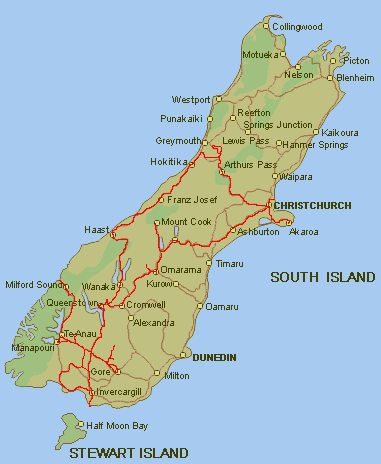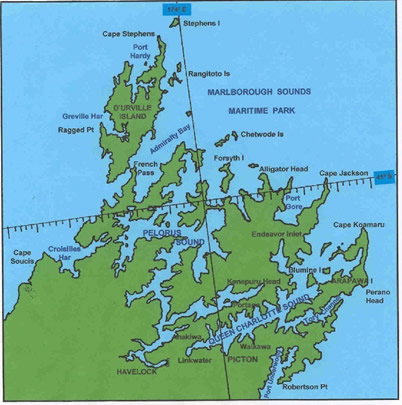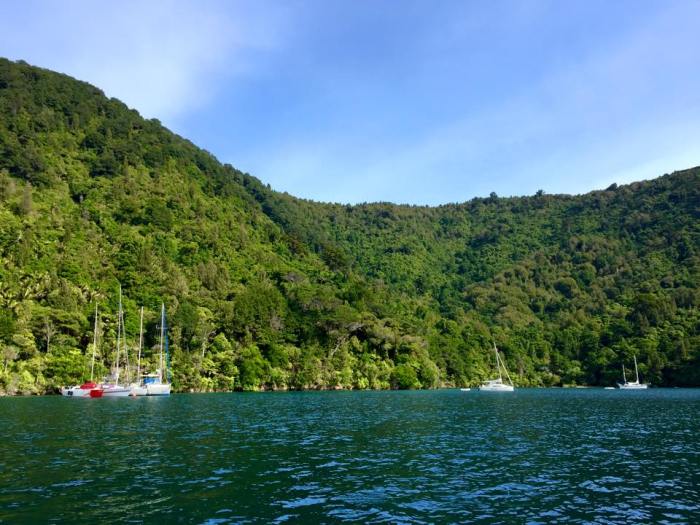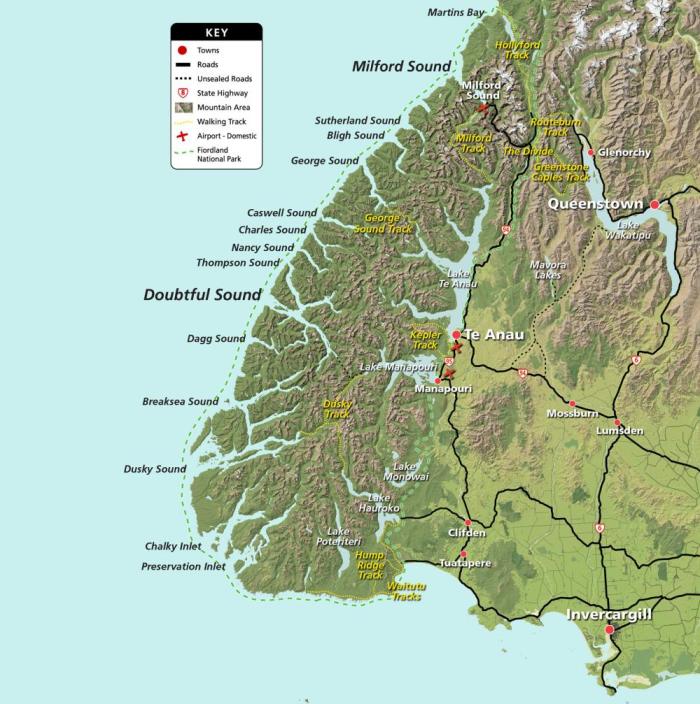It is a huge honour to be invited to speak at the Women Who Sail Australia annual conference – The Gathering in April 2018.
I joined the Women Who Sail Facebook group back in early 2014, and discovered an incredible network of female sailors all over the world. Then I joined the Women Who Sail Australia group – for some more local conversation. It was soon after that that Shelley encouraged me to form a Women Who Sail New Zealand group, which I did in December 2014. We now have around 750 members and it is a fantastic way of sharing ideas, helping visitors, making new friends, asking advice and much more. If you are planning on heading in our direction any time soon then I encourage you to join our group and feel free to ask any questions and share any ideas with our friendly members.
I am really proud of what we have achieved and it is a huge honour for me to be here with Shelley and Charlotte – founders of the WWSA and WWS groups, celebrating everything to do with women in yachting!
My talk is about why people should consider sailing to the South Island.
I am based in Christchurch and my yacht – Wildwood is in Lyttelton. I haven’t circumnavigated the South Island yet, but I have been lucky enough to visit and sail in most of the places I am going to talk to you about, and I’d like to thank the lovely girls back at WWSNZ who have filled in the gaps with their favourite anchorage recommendations and photos as well.
New Zealand is a popular spot for cruisers visiting the South Pacific to wait out the Pacific Cyclone season – which runs from October through to April each year. This also conveniently coincides with our kiwi summer.
You can sail in New Zealand all year round if you want. We sail in winter until about the end of June – and then we ski for July & August and then go back to sailing again at the end of September.
Many get to the Bay of Islands and stop there, preferring to get a rental car to explore the rest of the country instead of sailing any further south.
There is definitely some sense in doing that. Many of the interesting sights the country has to offer are inland and therefore a bit tricky to access by boat. The weather can be challenging too – you need to have a bit more time up your sleeve and be prepared to wait for a suitable window to make your passages.
But if you are up for some adventure, keen to visit some incredible places (Some of which are inaccessible by car), and are interested in stunning scenery, waterfalls, secluded bays, towering mountains, friendly people, lush forests, incredible fishing and diving and so much more… then join me now for a quick circumnavigation of the South Island.
But firstly – some administration:
Before you arrive in New Zealand here are some other tips:
- Before you set sail – download the yacht pack here – with all the info and forms for customs & immigration you need to complete before you arrive.
- You need to send an advance notice of arrival – at least 48 hours before you arrive in NZ waters
- You’ll pay a Border levy of about $21.00 per person when you arrive – this covers arrival and departure.
- There are strict restrictions on things you can bring in to the country – especially fresh fruit and vegetables, meat, eggs, honey etc. Your boat will be checked and these things will be taken off you – eat up before you arrive! Declare anything you are unsure of – there are very strict penalties for not declaring things.
- You can temporarily import you boat in to NZ for up to two years – this means you don’t need to pay duty or GST.
- If you are permanently importing your boat to NZ then duty – 5% and GST 15% will apply.
-
If you are temporarily importing the boat then certain goods and services may be supplied to you without payment of GST and it is up to the seller/retailer/provider to decide if that is applicable. You will need to record all details of these purchases on the reverse side of the TIE form.
- Bringing pets in to NZ is possible but complicated. More info here. Remember cats and dogs can chase and kill our native flightless and endangered birds – so if you do bring them in extreme care needs to be taken when going ashore.
- Your hull needs to be clean and free of biofouling – you may need to provide evidence of the last time you hauled out and your hull may also be inspected. More info here.
- The following documents might also be of interest. We’ve posted a tonne of new guidance on biofouling lately for vessel operators – find relevant documents here for:Guidance for dive inspections for vessels entering New Zealand >> https://www.mpi.govt.nz/…/27852-guidelines-for-diving-servi…
-
Guidance on what we’d like to see in a biofouling management plan >> https://www.mpi.govt.nz/…/27855-guidance-for-vessel-owners-…
-
Technical guidance on how to manage a vessel using best practice >> http://www.mpi.govt.nz/…/27726-technical-guidance-on-biofou…
-
If you haven’t already, visit the Ministry of Primary Industries website to find out about the upcoming changes to biofouling management. Changes will be in force from 15 May 2018 >> www.mpi.govt.nz/…/arrival…/biofouling/biofouling-management/
- If you have an Australian passport you can travel to NZ without a visa and stay for as long as you like
- Many other passport holders can get a three month visitors visa on arrival, or you can apply for a visitors visa online before you arrive. You can get extensions to your visa for up to nine months.
- You’ll need to show evidence of funds to support you during your stay in NZ – this is NZD$400 per person per month if you are on a boat (according to Immigration NZ, but you might like to budget for more than that in reality!)
- If you aren’t departing NZ by boat, then you’ll need to provide evidence of an onward ticket.
- If you are keen on fishing click here to read the recreational fishing rules. There are strict penalties (including seizing your yacht!) if you break the rules – which includes catching too many or too small fish or if you are fishing in a marine reserve. The rules change depending on which part of the country you are in.
The South Island
- Aprox 450M long
- 3100M of coastline
- Marlborough
- Banks Peninsula
- Otago
- Stewart Island
- Fiordland
- Abel Tasman

The Marlborough Region
- 1800km of Coastline – over half the South Island’s coastline is here!
- Queen Charlotte Sound
- Pelorus Sound
- D’urville Island
Marlborough is one of our favourite cruising destinations. There are literally hundreds of bays to explore. Much of the area is inaccessible by road. Water taxis and private boats deliver people to their holiday houses nestled in the trees.
But to get there – you need to cross Cook Strait – with notoriously bad weather and horrible currents. The wind funnels through the Strait and the tides are high on one side and low on the other – creating about a 2m difference over a short area.
Captain Cook loved the Marlborough Sounds and spent quite a bit of time in Ships Cove – which is a stunning place.
Picton is the main township – the ferry from the North Island comes in here. There is a marina there and also in Waikawa – the next bay around where you can get fuel and groceries.
There are a few lodges around the Sounds offering meals and coffees etc.
The bays are deep and we usually anchor close in to shore with long shore lines holding us in place. Get at least 100m of brightly coloured stretchy line to use as a shoreline for this purpose.
You could spend months exploring just this region – my favourite places in Queen Charlotte Sound are:
- Ships Cove
- Resolution
- Furneaux Lodge – a lovely restaurant on the beach
- Punga Cove – another lovely restaurant/cafe
- Tawa Bay
- Governors Bay
- Lochmara Lodge – ice creams, restaurant and an interesting farmyard and aquarium
- Kumutoto
- Flipper Bay
- Double Cove – feed the tame fish
- Hitau Bay – in Tory Channel
- The Whaling Station in Tory Channel
Read Rob Mundles book ‘Cook’ while you are here and feel the early explorers history of the area come to life.

If the weather turns nasty – which it inevitably will…! You can tuck yourself away in a little bay somewhere or book yourself a berth in Waikawa Marina and head in to Picton and visit the Edwin Fox – the worlds oldest merchant ship, or get a shuttle in to Blenheim and visit some of the incredible wineries. More info on Picton here.
You can also go fishing and diving here (check the fishing regulations and ensure you don’t break any rules). There is also great bird watching and lovely walks.
You can easily spend a couple of weeks exploring Queen Charlotte Sound. Pelorus Sound is bigger and less populated, and d’Urville Island only has a couple of residents. The scenery is stunning, lots of secluded anchorages to discover too. Both are both places I need to spend more time exploring!
You can join Waikawa Yacht Club as a temporary member over the summer and get the use of their moorings all over the Sounds. (Be prepared to raft up)
- The Marlborough Cruising Guide App is brilliant – check out http://www.cruiseguide.co.nz
- The Central Cruising Guide book is also very handy
More info about cruising around the Sounds here.

Kumutoto
Heading South
It is worth picking a suitable weather window for heading South.
Ideally you want to avoid a strong NW or Southerly in Cook Strait, you also want to check the tides in Tory Channel – the current at the entrance can be up to 7kts, and this can make things challenging when navigating the narrow passage with huge ferries coming and going in both directions!
Best to wait for a Southerly front to go through and then head South after that – you’re more likely to have some settled weather for a few days after that.
Its about 180 miles from Waikawa to Lyttelton, and there isn’t really anywhere suitable to stop along the way – although if you do have a long spell of settled weather then you can stop in Kaikoura – but beware this is a very rocky coastline and the seabed has changed up to 5metres in places following the earthquake in 2016. Some charts may not be accurate.
Keep an eye out for whales and lots of dolphins as you head south.
Some passage planning notes for this leg can be found here.
Banks Peninsula
The main ports are Lyttelton and Akaroa, but Banks Peninsula is full of incredible bays to explore.
We have just got a new marina – Te Ana Marina in Lyttelton and we hope that this will help encourage people to come and visit.
We also have a haulout yard which can cater for boats up to aprox 10 tonne.
Our favourites:
- Corsair Bay – a great anchorage in Lyttelton Harbour
- Diamond Harbour – another great anchorage in Lyttelton
- Port Levy
- Pigeon Bay
- Okains and Le Bons Bay
- Akaroa Harbour also has a number of different anchorages
Some excellent information on places to visit here on our Little Ship Club blog.
Let us know you are coming – we will do our best to make you feel welcome, as will the Akaroa cruisers group. We don’t get many visitors and we love meeting new people!

Lyttelton is a great launching spot to visit:
- Christchurch – 20 mins through the tunnel by bus or Uber – still rebuilding following the earthquakes in 2010 – but lots of interesting things to see including the beautiful Botanical Gardens, the Antarctic Centre, Art Gallery, etc
Or rent a car or take a tour and head a bit further afield:
- Kaikoura – if you didn’t get to stop as you sailed past
- Hanmer Springs – hot springs in the mountains – about 2 hours drive north
- Waipara – a lovely wine region about an hour drive north
- Arthurs Pass – up in the Mountains – about an hour and a half West – some great walks in the mountains. Some lovely lakes up there too including Lake Coleridge.
- The West Coast – allow a few days and explore Punakaiki further north to Westport or head south to the Glaciers (There aren’t really any ports on the West Coast that are easy to access unless you are really adventurous and fancy going over a bar and up a river – so driving there from the East Coast is the easiest way of seeing this part of the world)
- Lake Tekapo and Mount Cook – about three hours South.
Then cruise around some of the bays towards Akaroa. It has an interesting French heritage. Visit the little museum, the Giants house has some stunning mosaics, there are lots of lovely cafes and touristy shops. Provisions available from the Four Square supermarket and there is a lovely butchery. Fuel available at the service station. Akaroa Yacht Club and French Farm Yacht Club warmly welcome visitors and have moorings available to rent.
Shackleton’s boat Captain – Frank Worsley is from Akaroa, and his book “Shackletons Boat Journey” is an incredible story of survival. If you haven’t read it then you MUST! There is a statue of Worsley by the main wharf and a display on him at the museum.
If you enjoy walking then the three day Banks Track is stunning.
Heading South
- 80M to Timaru
- 100M from Timaru to Dunedin
- 100M from Dunedin to Stewart Island
- (Aprox figures)
- So 280M all up from Chch to Stewart Island

Dunedin is an interesting place to stop with a Scottish heritage and an Albatross colony out on the Peninsula for the bird watchers. Otago Yacht Club will give you a warm welcome.
Bluff is a fishing port and a possible stop over if required. Foveaux Strait is very shallow and the weather can be a bit challenging down here. Pick your window. Watch for the strong Westerlies.
Stewart Island is amazing!! Home to only a few hundred people – all living in one little town, the rest of the island is uninhabited. There are huge delicious blue cod down here, lots of seals and birds – kiwis walking on the beach during the day!
The main cruising areas are:
- Oban
- Patterson Inlet
- Port Adventure
- Port Pegasus
Get a copy of the Stewart Island cruising guide for info on all the amazing places to visit. It is wild and untouched and one of the places that you’ll only be able to get to by boat.
It will rain, you’ll have strong winds, but you will see some incredible scenery, stunning white sandy beaches, incredible bird life, great fishing, and really friendly people.
Don’t miss:
- Quiz night at the pub
- Catching a blue cod
- Eating paua (thinly sliced and fried quickly in butter and garlic with a squeeze of lemon)
- The whaling station
- Ulva Island – a predator free bird sanctuary

The supermarket is the best place to stock up on provisions – there aren’t any more shops for a few hundred miles on the next leg!
Mere Leask – Bluff Fishermans radio is the local contact on the radio for any information, trip reports, weather etc.
Stewart Island to South Fiordland
Aprox 60 miles
Lots of stunning sounds to explore.
There are very few people here, mainly fishermen. A few hunters. Tourists are all in Doubtful and Milford Sound.
You need a clean hull pass to visit:
The Fiordland Marine Pathway Plan sets out rules which apply to all vessels entering within one nautical mile of the landward boundary of the Fiordland Marine Area.
All vessels must hold a Clean Vessel Pass. Obtaining the pass includes agreeing to abide by the following standards:
- The hull and niche areas have no more than a slime layer and goose barnacles.
- Free and if done online can be approved the same day
- Pass lasts for 12 months
- Records of hull cleaning must be kept and presented
- Go to Environment Southland website for more details www.es.govt.nz

It will rain – a lot! And you will get eaten by sandflies, but once again you’ll be visiting a part of the world that is inaccessible to anyone without a boat (or a helicopter, or strong legs) – an untouched wilderness of stunning beauty.
- Allow plenty of time
- Provision well before you get there – very little in the way of shops
- Plenty of fishing though!
- Long anchor chain (very deep water) and stern lines
- Take lots of insect repellant and mosquito nets
- Milford is the most touristy – accessible by road
- Read Emily’s blog: http://emilycirclesnewzealand.blogspot.co.nz
- And Michaela’s blog: http://sailalita.blogspot.co.nz
Heading North
Aprox 380M ish from Fiordland to Abel Tasman
There aren’t really any suitable places for stopping unless the weather is very calm – you can go over the bar in to Greymouth or Westport.
I won’t post any of the YouTube videos here for fear of putting you off coming South entirely (it isn’t like that all the time) – but if you are considering crossing the bar and going in to Greymouth or Westport you might want to look them up yourself. Get advice from the local fishermen if you plan to attempt it to get the right time to go.
Otherwise, pick your weather window and head north doing one long passage.

Abel Tasman & Nelson

The Abel Tasman area is absolutely stunning. Give Farewell Spit a wide berth – this is a huge sand bank. There is a lighthouse but it isn’t right on the end – the sand extends much further. Whales often beach along here too.
I’ve done lots of trips to this part of the world – there is fantastic hiking, especially the Abel Tasman track. But I haven’t sailed here yet – so I asked some of the WWSNZ to share their favourite anchorages with you:
Some of the bays are shallow and when the tide comes in and out trailer yachts go in to the estuaries and put their legs down and dry out between the tides.
Sally Rose: There are only really a good solid couple of anchorages here and the rest are all weather dependent and whether or not you can handle the easterly roll that comes through overnight. Anchorage is the safest in all weather. Then it depends on the size of your boat as well as its all very tidal. If you have a bilge keeler or a trailer yacht you can get to some awesome spots in the lagoons to stay. Top end of Totaranui also good but quite a few uncharted rocks up there.
Joanna Lowrey:Abel Tasman is a beautiful place Pohara Harbour- Port Tarakohe in the Golden Bay area is fantastic little Harbour, also if the weather conditions are right you can anchor on the south side of the Awaroa inlet and you also you have Adele Island as well as another lovely Anchorage. i may not have spell the names correct…
Andrea England: We love Onetahuti beach, Abel Tasman. It’s a good anchorage when settled, in about 6m. The southwest side of Tonga island is a pleasant day anchorage to see the seals. Awaroa Bay is another great anchorage- south west of the Head- you can get to the lovely beach at high tide.
Gill Durham – Port Tarakohe is a great spot.

Suzanne Roberts: We’ve overnighted in Boundary Bay several times and this is our go to before Anchorage (weather dependent of course). Walk from Torrent Bay to Bark Bay 2 hours. See Split Apple rock. There are also several bays you can anchor in and visit the gorgeous beaches and lagoons by dingy. A seriously beautiful place to visit.
Motueka and Nelson
The town of Motueka and the city of Nelson will be your best bets for re-provisioning since Stewart Island!
Motueka has a small marina – click here for some navigation tips getting in there.
Nelson is a lovely city and has a large marina.
d’Urville Island
d’Urville Island is incredible, you can choose to go around the Western side and visit the two harbours on that side – both of which provide great shelter. Or you can take the shortcut and go through French Pass. But beware! French Pass has very strong tidal streams of up to 7kts and you should aim to go through at slack tide. You can check out the tidal flow tables here.
That brings us back to the Marlborough Sounds!
If you’d like to go a bit further afield check out the Chatham Islands.
This is just a very quick tour of what the South Island has to offer.
Some tips:
- Keep a close eye on the weather
- Have a good anchor and ground tackle
- A 100m long, brightly coloured stern lines for tying ashore
- Get in touch with the local yacht clubs – we love visitors!
- Obey the fishing regulations
- Join Women Who Sail New Zealand for more tips and advice
- Comment below if you think I have missed anywhere you’d like to recommend
Women Who Sail NZ Burgees
A great way of identifying fellow friendly WWSNZ members. I have brought some with me. They are $40.00 (or $44.00 including international postage.)
Just send me an email viki.moore @ iCloud.com and I will get one in the post to you straight away.




Well done Vicky – great news. Still loving your posts.
LikeLiked by 1 person
Very informative. Will come back to this for reference. Thanks Viki!
LikeLiked by 1 person
Would be great to see you here!
LikeLiked by 1 person
It is on the list, but we have our cat so we’ll see.
LikeLiked by 1 person
wow! So epic! Inspiring too!
LikeLiked by 1 person
Thanks! 🙂
LikeLike
Pingback: Women Who Sail – Gathering on the Bay 2018 | Astrolabe Sailing
Great talk, Viki! Would have loved to hear it in person. I’m sure we’ll meet someday. Take care!
LikeLike
Hope so Diane! X
LikeLike